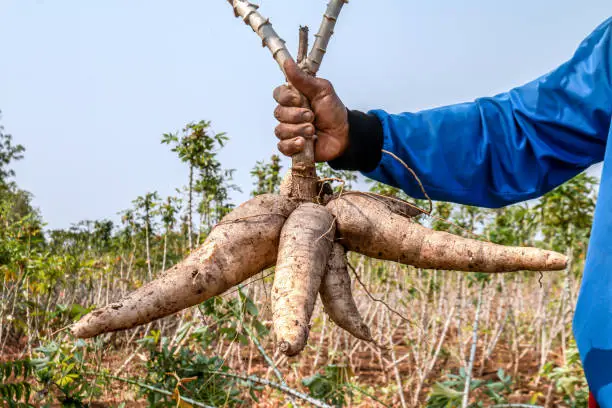- 이 주제는 비어 있습니다.
- 글쓴이글
- 4월 3, 2025 6:13 오전 #619852

Cassava is one of the most important root crops globally, particularly in tropical regions. The successful harvesting and proper post-harvest handling of cassava are crucial to maximizing its yield, quality, and market value.
If not handled appropriately, cassava can deteriorate quickly after harvest, leading to significant losses. Therefore, implementing effective harvesting and post-harvest handling techniques is essential to ensure the longevity and quality of cassava for both local consumption and commercial distribution.
1. Timing of Harvesting for Optimal Quality
Harvesting cassava at the right time is critical to achieving optimal quality and yield. Cassava roots are typically ready for harvest between 9 to 12 months after planting, depending on the variety and environmental conditions.
Harvesting too early can result in lower starch content and smaller roots, while delaying the harvest can cause the roots to become woody and fibrous, reducing quality.
The ideal time for harvesting is when the roots have reached their full size and the plant starts showing signs of maturity, such as yellowing of leaves. Ensuring proper timing is vital to produce high-quality cassava that meets market standards.
2. Harvesting Techniques and Tools
Using the correct techniques and tools during the harvest is essential to prevent damage to both the cassava roots and the surrounding soil.
Typically, cassava is harvested manually using tools like hoes, spades, or machetes. Care must be taken to gently uproot the cassava plants to avoid bruising or cutting the roots. Workers should dig around the root system, lifting the plant from the soil while being mindful of the roots, as they are delicate and can easily break or get damaged.
Proper harvesting techniques reduce physical damage and ensure that the roots remain intact, which is crucial for preserving quality during post-harvest handling.
3. Post-Harvest Handling and Storage Conditions
After harvesting, proper post-harvest handling is essential to maintain the quality and nutritional value of cassava. The roots should be handled carefully to avoid bruising or skin damage, which can lead to rapid deterioration. If cassava is not going to be consumed immediately, it is important to store it in cool, dry, and well-ventilated conditions.
High temperatures and humidity can accelerate spoilage, causing the roots to decay or develop mold. In tropical climates, cassava roots should be processed or consumed within a few days of harvest to prevent them from deteriorating.
For longer storage, farmers can use methods such as drying, freezing, or processing the roots into products like cassava flour or chips, which extend shelf life and reduce waste.
4. Processing for Extended Shelf Life
One of the most effective ways to handle cassava post-harvest is through processing, which helps extend its shelf life and make it easier to store and transport. The most common methods of processing cassava include drying, fermenting, and converting it into flour or chips.
Drying cassava removes moisture, reducing the likelihood of microbial growth and spoilage. Fermentation can improve the flavor and reduce the levels of cyanide compounds in the roots.
For commercial purposes, cassava can also be processed into products such as cassava flour, starch, and chips, which are more stable and have a longer shelf life. Proper processing techniques help maintain the nutritional value and prevent losses during storage and transportation.
5. Transporting and Marketing Cassava Products
Transporting cassava requires careful consideration to prevent physical damage and spoilage during transit. Since cassava is perishable, it should be transported as soon as possible after harvesting, especially if it is not processed.
In the case of fresh roots, packaging them in ventilated crates or baskets can reduce the risk of bruising and ensure proper air circulation. For processed products such as flour or chips, packaging should be airtight and moisture-resistant to prevent contamination.
Proper handling during transport, combined with effective packaging, ensures that cassava products maintain their quality and are fit for market sale. Additionally, understanding the demand and ensuring timely marketing of cassava products help maximize profits for farmers and suppliers.
Effective harvesting and post-harvest handling techniques are key to maintaining the quality and increasing the shelf life of cassava. By harvesting at the right time, using proper techniques, and applying suitable post-harvest practices like careful storage, processing, and packaging, cassava farmers can ensure high-quality products that meet market standards.
These techniques not only prevent losses but also contribute to the sustainability and profitability of cassava farming.
Read Also: The Impact of Soil Fertility on Cassava Growth and Yield
- 글쓴이글
- 답변은 로그인 후 가능합니다.

